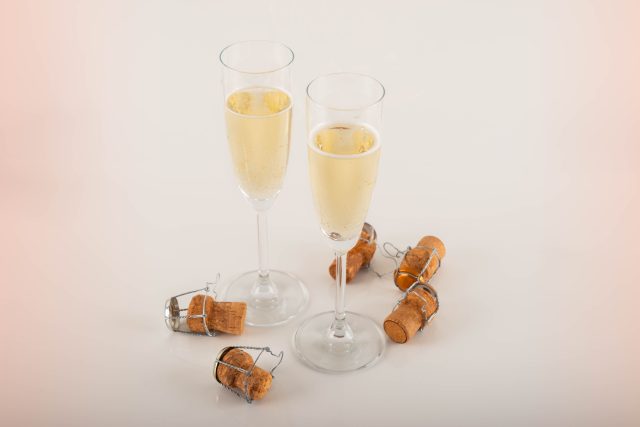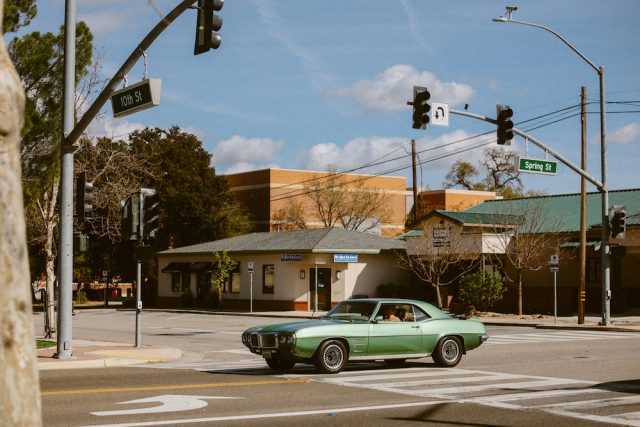This website uses cookies so that we can provide you with the best user experience possible. Cookie information is stored in your browser and performs functions such as recognising you when you return to our website and helping our team to understand which sections of the website you find most interesting and useful.
American sparkling wine is graduating
For decades, great sparkling wines made in the Méthode Champenoise in California, Oregon and elsewhere, have garnered praise from critics and adulation from bubbleheads. Now the American sparkling market is changing. Kathleen Willcox reports.

Iconic French Champagne houses, including Champagne Bollinger, Taittinger, Moët & Chandon, G.H. Mumm, Champagne Louis Roederer began creating American outposts in the 1970s, and the interest has only increased in the subsequent decades.
During that time, American sparkling wine generally fell into two categories: Méthode Champenoise wine made with the major classic Champagne grapes, Chardonnay, Pinot Noir and Pinot Meunier; sparkling wine made in alternative methods such as Method Ancestrale or forced carbonation, with a range of grapes.
Guess which one is taken more seriously, and priced accordingly? But recently, an increasing number of vintners are embracing a hybrid approach: they are making wines in the Méthode Champenoise with grapes carefully selected for their particular time and place.
It feels like a graduation from an era of apprenticeship to one of ownership, and it feels particularly timely given the tricky marketing moment American wine is having right now.
A Generational Shift in Habits
Wine sales forecasts overall have been mixed in recent years, and the latest data for the U.S. market from drinks market analyst IWSR shows a -2 percent decline between 2022 and 2027. But there are bright spots, with sparkling wine in particular showing signs of strong growth, with a growth of 6% between 2017 and 2022, and a projected continued growth of 1%, between 2022 and 2027.
Much of that is driven by an increase in the frequency with which bottles of fizzy are popped (about 38%of sparkling wine lovers are drinking it every week, up from 22% in 2019), and the affluence of younger generations who are turning to pricier bottles of bubbles on a regular basis.
That same cohort, dubbed the Prosecco Generation by David Kent, the former CEO of the Wine Group, who founded Darcie Kent Vineyards in Livermore, CA, is eager to experiment and explore fine sparkling wine in a number of guises.
“For my daughters and their friends and cohorts, people in their 30s, their palates are getting more sophisticated,” Kent says. “And they have more disposable income now. But they don’t seem to be gravitating toward Champagne in the same way. They want authenticity and bold flavours.”
Finding the Right Grape for the Place

“Historically, the entire world has been trying to emulate what people have been doing in France,” notes winemaker Kevin Sass at Halter Ranch in Paso Robles. “And for decades, most serious sparkling wine producers were essentially trying to achieve what has been done in Champagne. But that’s not realistic or advisable everywhere.”
Certainly not in Paso Robles, he says.
“We have 20 grapes planted here across 256 acres, but no Chardonnay or Pinot Noir,” Sass says. “It’s just too warm. I figured sparkling wine just wouldn’t be an option, but then I looked at the chemistry of Picpoul Blanc, and I knew it was high enough in acid, and had the right flavor profile. The guts were there.”
In 2011, Sass made the base wine for a sparkling, and a small batch. He let it age on tirage, and realized he had something special. Starting in 2015, he began building a sparkling program in-house, experimenting with the amount of time on the lees and the yeast.
This year, the release amounted to 350 cases, but because it sells out every year, and he persuaded owner Hansjörg Wyss into planting more Picpoul, he will be able to slowly grow the release to 4000 cases by 2028.
“I love how it expresses Paso terroir with such elegance,” Sass says.
Kent is also aggressively growing Darcie Kent’s sparkling program, in part because he loves what’s in the glass, and also because he thinks it’s what the “Prosecco Generation” will gravitate toward in the coming years.
“Aromatic whites and sparkling wines,” Kent says. “I’m hanging my hat on them. We’ve been making a sparkling Gruner Veltliner on and off since 2016, and now it’s up to 3,000 cases every year. This year we’re introducing a sparkling Sauvignon Blanc and Malbec.
We’ll start both small at 400 cases, and see where they go. I want to show the world what Livermore is capable of, and I think this is the best way to do it.”
James Mantone, founder and winemaker at Syncline Winery in Columbia Gorge, WA, has found that while other non-Champagne grapes don’t have the pH, potassium or acidity that he thinks sparkling wine needs, Gruner Veltliner “mimics the chemistry of traditional varieties, producing a fun and zippy wine with herbal, cucumber and melon notes, obviously not like Champagne, but plain old delicious.”
On the North Fork of Long Island, Kareem Massoud began making a sparkling Chenin Blanc in 2017 at Paumanok Vineyards, and has loved the results.
“We started doing a Blanc de Blanc with Chardonnay in 2009, and I decided to branch out to a sparkling Chenin,” Massoud says. “The first year we did just 60 cases, and it sold out instantly. Because it takes three years on tirage as a minimum, it takes time to grow the program, but we love the citrusy flavor it brings, the high acidity. The next release will be 200 cases.
Speaking a New Language for a New Generation
For other vintners, the embrace of different grapes signals, at least in part, a new paradigm. Bree Stock makes three SKUs of sparkling wine for Artist Bloc Wine: a Method Ancestrale Cha-Ching with Gamay, a Blanc de Noir with Pinot Noir that has not been released and a Blanc de Blancs with Chardonnay and Aligote.
For Limited Addition Wines, Stock, who is also Oregon’s only female Master of Wine, makes four sparkling SKUs: a Rose of Mencia Pet-Nat, a Gamay and Pinot Noir Blanc de Noir, a Pinot Meunier Blanc de Noir and a Pinot Blanc Blanc de Blancs.
“One of the beautiful things about working in the American wine landscape is having the freedom to explore our place and what makes the most sense for a vineyard or variety in that vintage, rather than having appellation rules we must follow,” Stock says. “There are certain varieties that have a real affinity for extended tirage and autolytic characters, like Chardonnay, Aligote, Pinot Blanc, Melon, Pinot Noir, Chenin Blanc.”
And then there are varieties that are more aromatic or expressive, she explains, pointing to Gruner Veltliner, Albarino, Vermentino and Riesling, which she says would be suited to a shorter tirage, but would also be fantastic sparklers without the autolytic character that the other grapes bring to the table.
Roger Lemstrom, vintner and founder at Los Rocosos Vineyards in the Rocks District of Oregon, is embarking on an experimental Méthode Champenoise Sangiovese, as a technical challenge, a bid for market share and also as an aesthetic experiment.
“Many are embracing sparkling wines now, and the technical challenge of making a Méthode Champenoise from a grape not often used to so will, I hope, elevate it to a new level,” Lemstrom says. “I also wanted to do something different than my counterparts in Eastern Oregon. Making a Pet-Nat is typically how sparkling is done these days here, so I thought it would also be interesting to be one of if not the first Méthode Champenoise in the region.”
The wine is riddling on the racks now, and will be released in two years at the earliest. A pivot to a more full-throttled embrace of all things sparkling may become, Stock predicts, more than “just” a marketing or philosophical exercise.
“It makes sense from a climate change perspective that West Coast winemakers become adept at making sparkling wines given the increases in wildfires in our major growing regions, California specifically, but no one is immune, at least you can harvest early and make sparkling wine from red grapes should a wildfire threaten your harvest,” Stock says.
“As wine regions we need to be proactive in creating sustainable solutions for farmer- growers and wineries to survive years where fire threatens our wines and health of our industry.”
A more economically viable future—crafted with a changing climate, challenging economics and transitioning palates in mind—is fizzing up all over the U.S. We’ll be watching to see how the market reacts to these changes.

